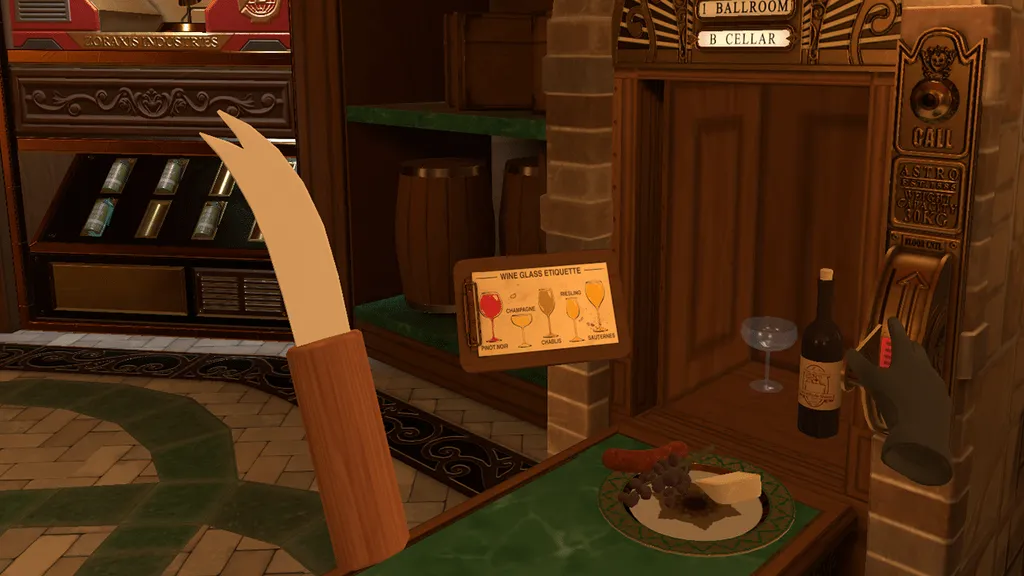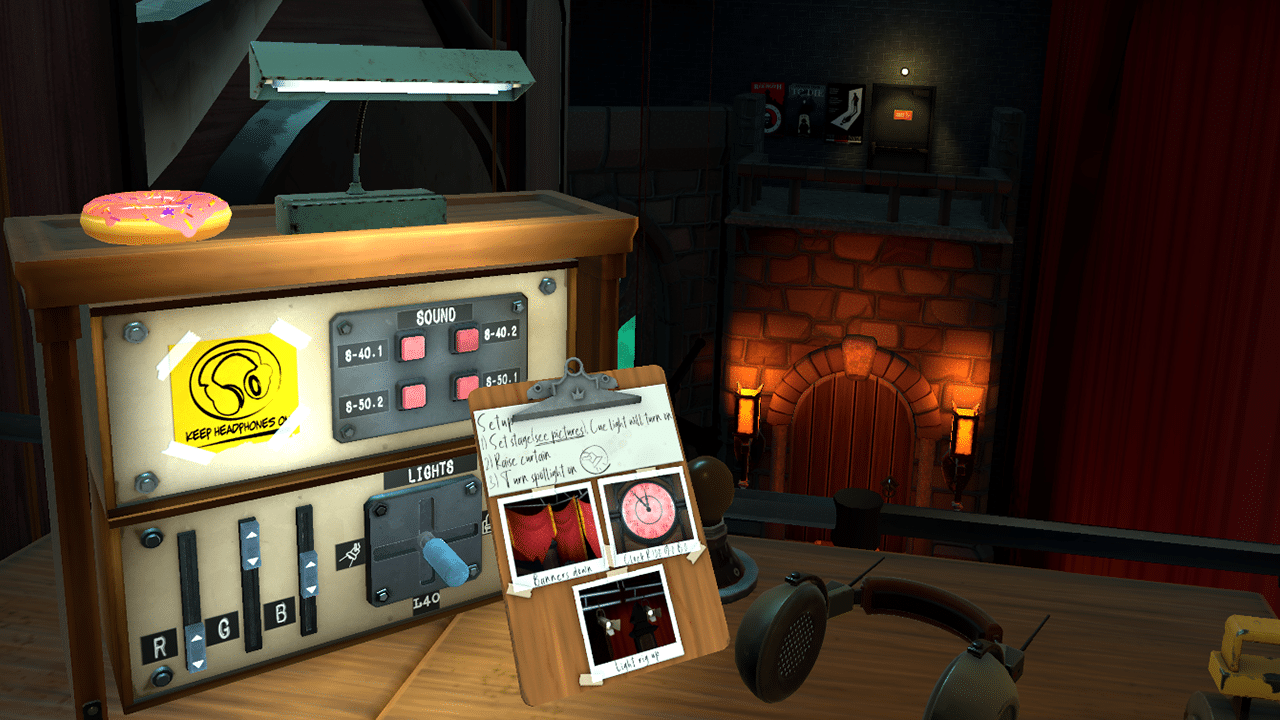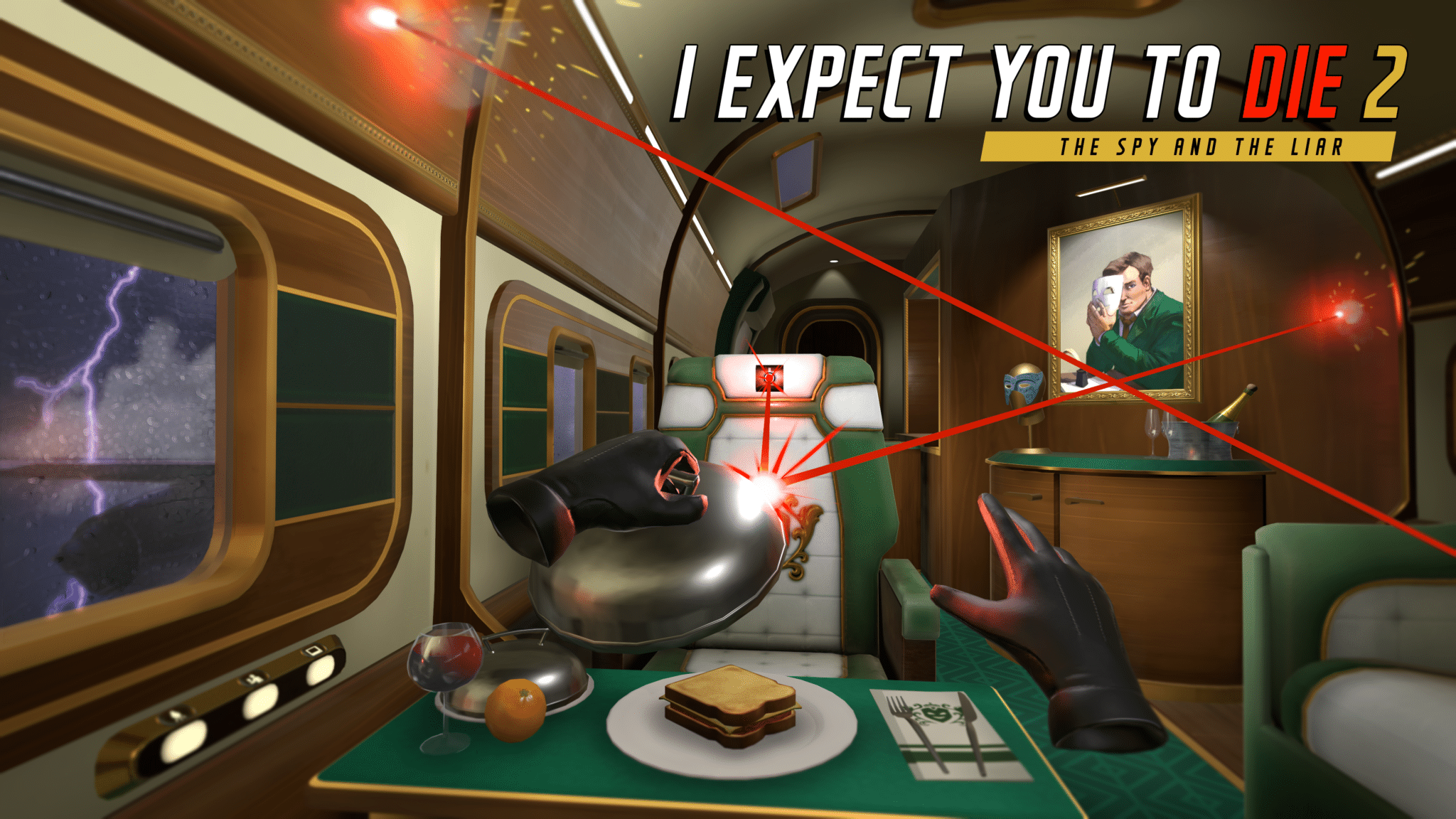Before Schell Games’ I Expect You To Die came to virtual reality, it was first realized in CR – cardboard reality.
The team constructed crude physical versions of its levels out of old boxes. Scribbled labels turned leftover Amazon parcels into complex machinery, with bottle tops becoming the dials and buttons to operate them. It’s not unlike how Hideo Kojima made Lego dioramas to plan out levels of Metal Gear Solid 2, only Schell’s sets were life-size.
This process helped the team map out space and interactions for some of the most inventive puzzles VR has yet seen, highlighting just how different the medium is to traditional games.
I was eager to know if Schell had repeated the process for its sequel, I Expect You To Die 2: The Spy And The Liar, which has been in development for the past year and a bit. But, as I open my mouth to ask that question of Project Director Charlie Amis, I’m reminded a global pandemic would have made that impossible. Fortunately, Schell was already kitted out with the latest gadgets when COVID-19 took hold.
“In cases of wanting to rapidly and cooperatively make a level design — a set — especially one that’s in a first-person VR perspective, we used a couple of other tools like SculptrVR,” Amis explains.
SculptrVR is a VR creation app similar to Tilt Brush or Quill with a specific focus on making 3D models like game assets or even entire environments. Crucially, the platform allows multiple people to explore creations. Schell was essentially trading in cardboard sets for virtual ones.
“It did get us very quickly to realize [different team members] were thinking of different spaces or the scale of spaces was often in our imaginations and by all being in there and sitting in the seats like: “Oh yeah, I see it. We should see a little bit of the wing over to our left and if the cabin’s this big, that could work.” So it got us to like a vision alignment way, way faster,” Amis says.
Like countless other developers around the world, Schell faced several challenges when it moved to remote work in the early months of 2020. But both Amis and studio CEO Jesse Schell count themselves lucky they A. started work on the sequel before lockdown and B. were working on a previously-established foundation instead of an all-new property.
“I think in general, we’ve found that during the pandemic, working from home is really hard when you’re trying to spin something new up,” Schell explains. “But when you got momentum on something and everybody can kind of go home and do it, and everybody’s already on the same page and everybody already has a sense of best practices? Those are the projects that have been easier to do during the pandemic.”
Work on I Expect You To Die 2 started up right after Schell released the final bonus level of the original game in late 2019. Amis wants the sequel to feel more “cinematic” than the original. It aims to be less a collection of levels released far apart (the first game released with four missions and released three free ones over the next three years) and more something that was “built from the beginning as a single whole to feel like one experience, as opposed to episodic.”
Amis hopes that’s what makes the game feel like a sequel. Schell is coy on the number of levels and what’s contained within them, though the trailer above shows a clipboard stopping an arrow dead in its tracks, and one puzzle seems to involve an inviting selection of cheeses.
Another perhaps more ambitious aim for the sequel is to unite the two warring factions behind any puzzle game – those that want hard puzzles and those that don’t. Amis says it’s “really important” that people aren’t hitting roadblocks but also ensuring that solutions are satisfying to appease hardened problem-solvers. That means building worlds, interactions and challenges that are intricate, immersive and feel organic to navigate. In VR, that’s no easy thing.
“I remember on the first game we put in a champagne bottle as a prop and people were like, “Oh, great. I want to open it!” Oh, of course you do. Okay,” Schell says. “Now it’s got a cork and you can open it. “Now I want to pour out the liquid into a glass!” Of course you do, now we’ve got to support liquid. Okay. All right. We’re supporting liquid now and “Great I poured it out and I can drink this champagne and that’s so cool. Now I’ve got an empty bottle. I want to break it.” Oh, of course you do. Okay. So now there’s a broken glass. “Oh, okay, I want to take this broken glass, use it as a knife and cut this wire.” Oh, of course you do. Now this is impacting our puzzles, but oh, okay, actually, that’s kind of an interesting side solve that maybe we didn’t think of and think about.”
And that’s perhaps the most fascinating thing about VR development and the reason I’m looking forward to Schell’s sequel. It’s a journey of discovery as much for the developer as it is the player. Amis says the game isn’t just about certain scenarios that the team internally thought would be cool but the alternate solutions that handing agency over the players results in.
The more you make, the more problems you solve, the more interactions you discover, the closer you’re pushing virtual reality toward our reality. Schell notes that the first game’s submarine level was made possible by the coincidental work it had done on liquids, for example.
Now it’s building an entire game on the rules and breakthroughs that have come before. Here’s hoping it’ll make for Schell’s best mission yet. I Expect You To Die 2 hits VR platforms later on this year.



























